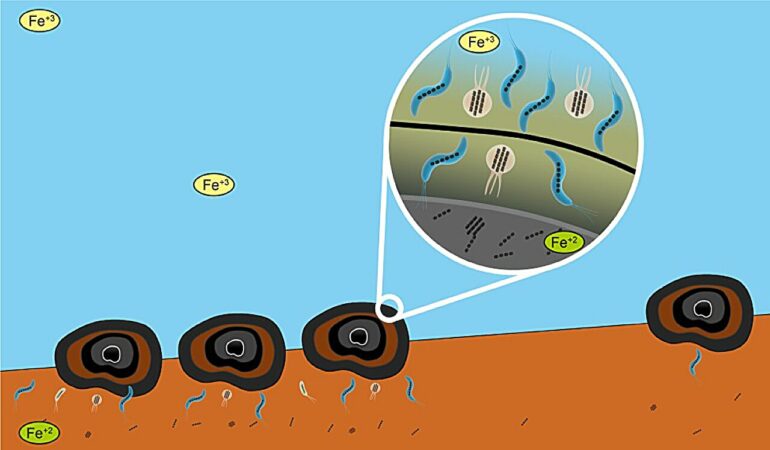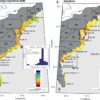Polymetallic nodules are potato-sized formations on the ocean floor that are rich in minerals such as nickel, cobalt, and manganese. Their concentration of rare, economically important minerals has made the nodules the focus of controversial deep-sea mining enterprises.
There are several hypotheses as to how the nodules grow, but most agree that they form as metallic components in seawater slowly precipitate onto the seafloor. Several studies suggest that microorganisms play a role in nodule growth as well. The nodules tend to contain biogenic magnetite—the fossil remains of magnetotactic bacteria, which have magnetic organelles that act like tiny compass needles.
In a study published in the Journal of Geophysical Research: Solid Earth, researchers have examined the relationship between bacteria abundance and polymetallic nodule distribution in the Clarion-Clipperton Fracture Zone (CCFZ), an environmental management area south of Hawaii managed by the International Seabed Authority. The CCFZ could be an economically vital region for the burgeoning deep-sea mining exploration industry.
The authors analyzed seafloor sediments collected during a research cruise in 2013. They used a vibrating sample magnetometer to determine magnetic properties, electron microscopes to identify minerals based on electron diffraction, and spectroscopy techniques (which test how materials absorb and emit light and other radiation) to test for rare earth elements.
The results revealed three distinct origins of magnetic minerals in the samples: windborne dust, volcanoes, and bacteria. Windborne sediments were likely transported into the region by midlatitude westerlies and northeasterly trade winds, as indicated by decreasing magnetite concentrations from north to south and from east to west in the CCFZ. Volcanic magnetite resulted from the Antarctic Bottom Water’s erosion of the Line Islands and Hawaiian chain.
The highest abundance of biogenic magnetite, the type associated with bacteria, coincided with the highest densities of polymetallic nodules in the CCFZ. The findings led the authors to hypothesize that the nodules produce carbon-rich, low-oxygen microenvironments that both support bacteria and encourage the biomineralization of magnetite nanocrystals. In turn, the bacteria help to foster the growth of the nodules.
The results offer new insights into the formation of polymetallic nodules and the ecological distribution of magnetotactic bacteria, with implications for potential deep-sea exploration.
More information:
Yan Liu et al, Insights Into a Correlation Between Magnetotactic Bacteria and Polymetallic Nodule Distribution in the Eastern Central Pacific Ocean, Journal of Geophysical Research: Solid Earth (2024). DOI: 10.1029/2024JB029062
Provided by
American Geophysical Union
This story is republished courtesy of Eos, hosted by the American Geophysical Union. Read the original story here.
Citation:
The unexpected role of magnetic microbes in deep-sea mining (2024, September 26)



